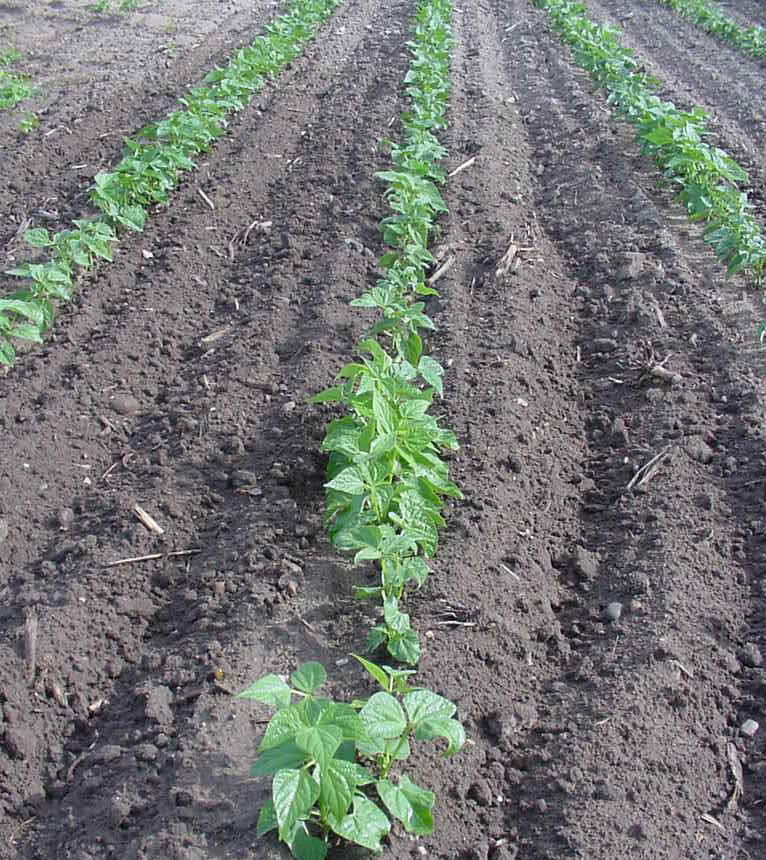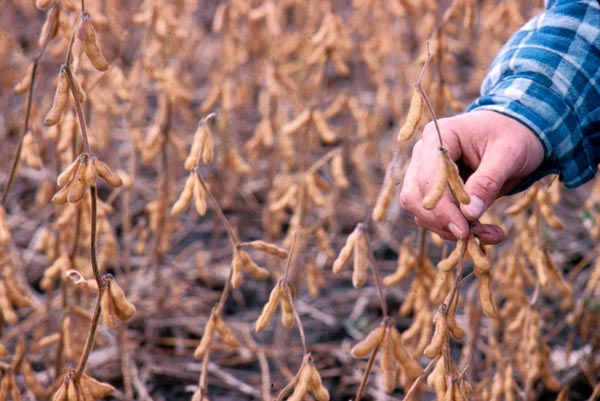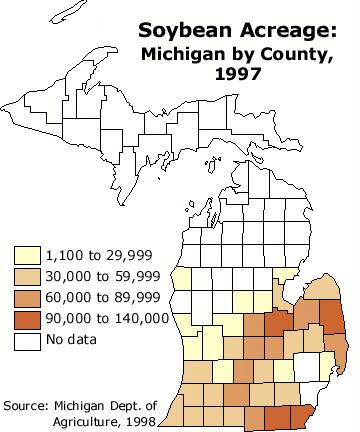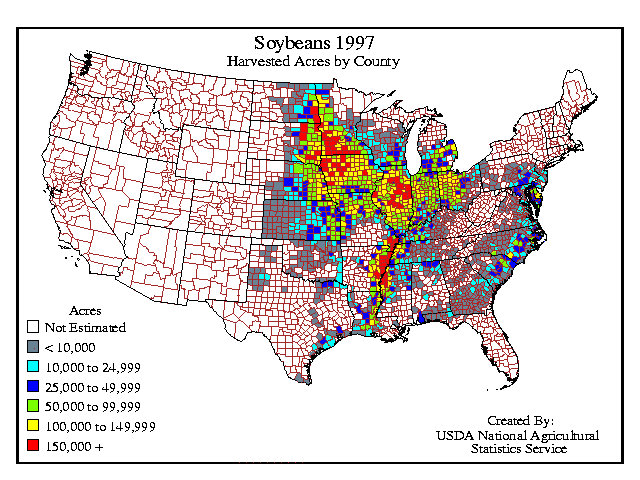SOYBEANS
More soybeans are grown in the United States than anywhere else in the world. Soybeans
were used primarily to feed livestock until the early 1900s, when scientist George
Washington Carver discovered that soybeans provided valuable protein and oil. The soybean
provides many nutrients to both people and animals. It is especially high in protein. Many
countries use soybeans as their main source of protein instead of meat, eggs or cheese.
The soybean plant is called a legume because it collects nitrogen from
the air and releases it back into the soil. This is important for growing healthy crops
and maintaining soil quality.

Because it is a legume, the soybean plant is a valuable tool in crop rotation. This means farmers can plant other crops in the space where the soybeans had been planted the year before and the nitrogen left by the soybeans feeds the next crop. As the soybean plant grows, it branches out in all directions and produces many leaves. The bushy plant grows from two to three and a half feet high. The stems, leaves and pods are covered with short, fine hairs. Small white or purple flowers grow where the leaf joins the stem.
Soybean production in Michigan totaled 54.7 million bushels, with per-acre yields of 35- 40 bushels being common.
Source: Unknown
Soybean oil is a popular vegetable oil in the United States. When crushed and pressed,
soybeans produce an oil that is used in margarine, cooking oils, salad dressings,
mayonnaise and many prepared foods. Soybean oil contains no cholesterol and is low in
saturated fat so it is popular with health-conscious people. Soybean oil is also
used to make paints, varnishes, soaps, cosmetics and plastics. Soybean oil is even used to
make ink for printing newspapers and magazines.
After soybean oil is removed in processing, the remaining flakes are
processed into food products or protein meal for animal feed. Soybean meal is an important
protein source for livestock and poultry.
Farmers plant about 1.3 to 1.5 million acres of soybeans in Michigan.
The average price per bushel is about $6.00 to $6.50. Soybeans are typically grown
wherever corn does well. Lenawee, Saginaw, Monroe, and Shiawassee continue to be the
leading counties in soybean production.
Soybeans grow in pods similar to peas. During the summer, the soybean plant flowers and
produces 60 to 80 pods. Soybean pods range in color from very light yellow to shades of
gray, brown and black. Two to four pea-sized beans grow in each soybean pod. The seeds may
be yellow, green, brown, black or speckled.


Unloading soybeans from a combine.
Like corn, soybeans are grown in the southern 1/3 of the state, in its "corn belt". Here, a warmer climate with a long growing season and more degree days combines with fertile, loamy soils and abundant summertime precipitation. Nationally, soybeans are generally grown wherever corn is.

This material has been compiled for educational use only, and may not be reproduced without permission. One copy may be printed for personal use. Please contact Randall Schaetzl (soils@msu.edu) for more information or permissions.